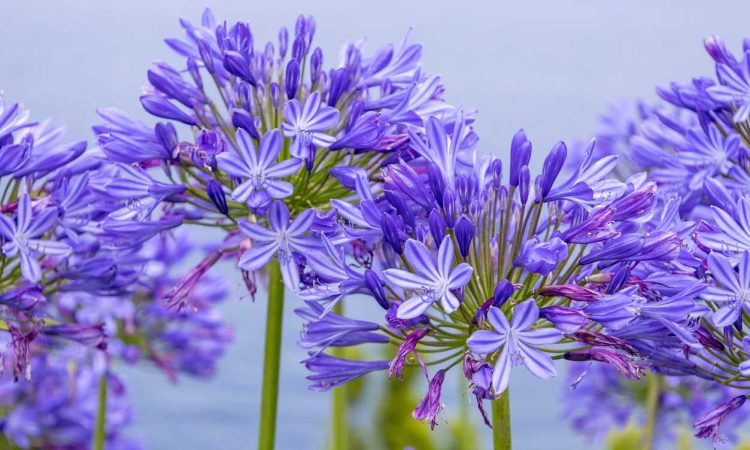This Tip Guarantees Agapanthus Blooms All Summer: Recommendations from Professional Gardeners

Agapanthus, also known as “Nile lily” or “African head,” are impressive perennials that add a touch of elegance and color to our gardens. With their long stems and umbellate flowers, they’re perfect for creating show-stopping beds or decorating borders. But to enjoy their blooms all summer long, you’ve got to follow a few simple gardening tips. Find out how to take care of your agapanthus so it can give you an explosion of flowers all summer long.
Agapanthus: what’s the ideal location?
Choosing the right location is crucial to ensuring abundant, long-lasting agapanthus blooms.
Exposure and soil
Agapanthus plants love the sun. To ensure optimum flowering, plant them in a location where they will receive at least six hours of sunlight a day. A sunny location not only promotes flowering, but also helps prevent certain fungal diseases.
As for soil, agapanthus plants prefer well-drained soil. They tolerate a variety of soil types, but slightly sandy soil enriched with organic matter is ideal. If your soil is too clayey, consider adding sand and compost to improve drainage.
Watering: when and how?
Watering plays a key role in the health and flowering of agapanthus. A good balance is needed to avoid overwatering while keeping the soil sufficiently moist.
Water your agapanthus regularly during the growing season, ensuring that the soil remains moist but not soggy. Too much water can cause root rot, while too little can delay flowering. In summer, a weekly watering is generally sufficient, but in dry spells, increase the frequency to twice a week.
OUR ADVICE:It’s best to water early in the morning or late in the evening to minimize evaporation. Water at the base of the plant rather than wetting the foliage, which can reduce the risk of disease.
Fertilization to stimulate Agapanthus flowering
To encourage abundant flowering, agapanthus needsa regular supply of nutrients.
Use a balanced fertilizer, rich in phosphorus, to promote flowering. An NPK (nitrogen, phosphorus, potassium) fertilizer with a 10-20-10 formula is ideal. Apply fertilizer in early spring, then a second time in mid-season, just before main flowering.
For gardeners preferring more natural solutions, homemade compost or well-decomposed manure can also be used. Enrich the soil around plants in early spring and autumn to improve soil structure and provide essential nutrients.
THE tip for continuous summer flowering
Here’s the ultimate tip for agapanthus in bloom all summer long: post-flowering pruning.
It’s crucial to encourage new flowering and keep the plant looking clean and healthy. Once the flowers start to fade, cut the flower stems at their base. This allows the plant to focus its energy on producing new flowers rather than seeds.
As well as pruning flower stems, remove yellow or damaged leaves to improve aeration and prevent disease. This regular pruning not only promotes continuous flowering, but also helps maintain the plant’s overall vigor.

